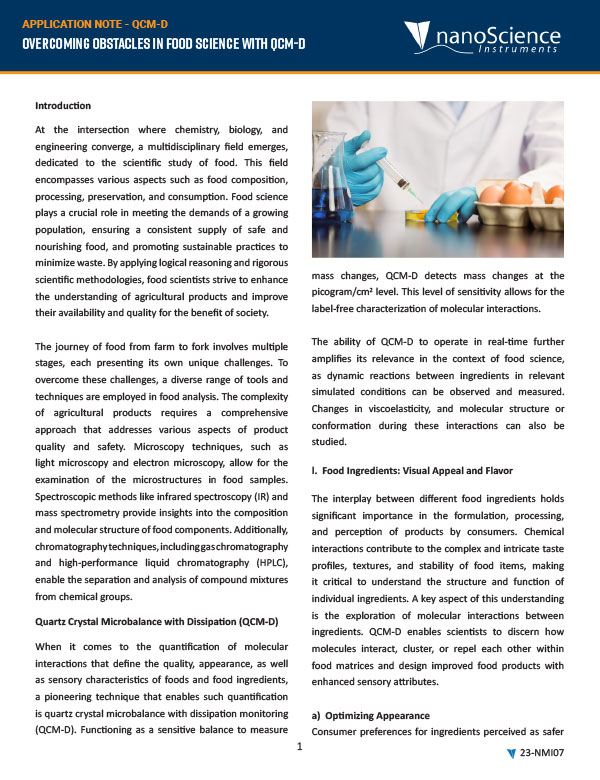Food science plays a crucial role in meeting the demands of a growing population, ensuring a consistent supply of safe and nourishing food, and promoting sustainable practices to minimize waste. Each step in the journey from raw materials to packaged food products presents different challenges, which can be addressed using various tools and analytical techniques. In this application note, we explore how Quartz Crystal Microbalance with Dissipation Monitoring (QCM-D) is valuable for quantifying the molecular interactions that define the quality, appearance, and sensory characteristics of foods and food ingredients.
In the application note, we discuss how QCM-D has been used to optimize ingredients and processes at each stage in the food production chain:
- Food Ingredients
- Optimization of visual appeal, flavor, and sensory characteristics of food ingredients/products
- Food Engineering and Processing
- Investigation of fouling during high temperature/high pressure food processing
- Comparative assessment of detergent performance for cleaning the processing equipment
- Food Safety and Storage:
- Enhancing food safety by detecting toxins during food production
- Improving food packaging materials


